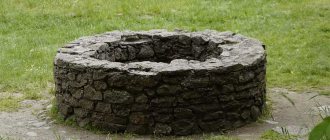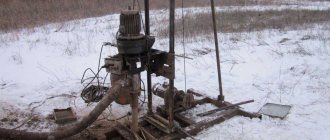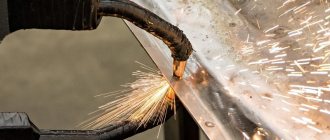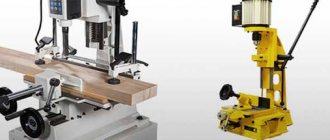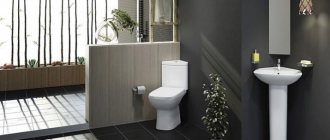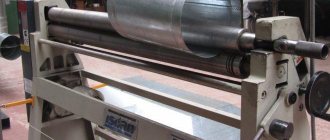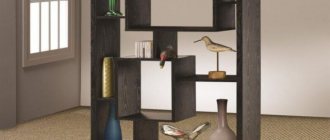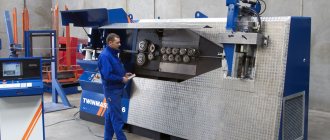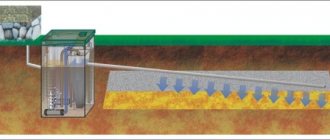The construction of greenhouses and sheds, the laying of utilities - all this requires a bent metal profile. But buying pipes bent to order is expensive, and purchasing a ready-made pipe bender is also not a cheap pleasure. So modern craftsmen use devices and self-made mechanisms to create metal arcs of the required radius.
In this article we will consider the following questions:
- Types of homemade pipe benders and their features.
- The design of the simplest device for bending square pipes.
- Design of a three-roll machine for bending round and square pipes.
- Technology for bending pipes using a three-roll homemade pipe bender.
Types of pipe bending devices and mechanisms
Nowadays, you can find examples of pipe bending equipment that have different designs: from relatively simple devices for manual bending to homemade machines with manual or electric drive.
According to their purpose, pipe benders are divided into two types.
The first type is angular (they allow you to give the desired radius to a certain area of the workpiece).
The second type is three-roll pipe benders - machines and devices that allow you to form a given bending radius along the entire length of the workpiece.
Depending on the method of adjusting the radius, pipe benders are mechanical.
And hydraulic.
The support shaft drive can be either manual or electric.
Profile benders
This section presents machines that allow you to shape profile pipes, round pipes and rolled products, strips, channels, square and rectangular profiles, etc. radius shape, performing circular bending,
performed with different internal bending radii in one or several planes with the spiral winding option.
The difference between this group of equipment and conventional pipe benders is that they are a bending mechanism, the bending device of which consists of rolling and gradually changing the bending radius of the installed workpiece. Rolling (or rolling) of the workpiece is carried out between 3 rollers installed in a horizontal or vertical plane, a pair of which are drive rollers (with manual or electromechanical drive), and one is a pressure roller or central one (manual, hydraulic, electromechanical drive is possible) , it then ensures that the required radius is obtained by moving along the axis in a perpendicular direction, increasing the pressing force on the metal profile, forcing it to take a more curved radius. This arrangement of the rollers of profile bending machines does not allow the machines to produce sharply curved workpieces; here, as a rule, the range of internal bending radii starts from 5D of the profile that is installed on the bending machine, the maximum value can be limited only by the structural dimensions of the profile bender.
A machine for bending profile pipes is necessary in almost any field of activity and is indispensable when working with various types of metal structures. Products produced using profile bending/pipe bending machines:
- arched structures (vaults, canopies, canopies, greenhouses, stained glass windows);
- frames for furniture products, street benches;
- children's and sports grounds;
- various types of fences (atriums, spiral staircases);
- building metal structures, roofs and openings.
When choosing a roll forming machine,
It should be understood that there are several main types of equipment such as profile bending machines, the design of which and the specifics of operation must fully comply with the parameters of your product, such as:
- pipe diameter or profile section,
- wall thickness,
- internal radius and bending
.
Therefore, no matter what model of machine for bending a metal product we are talking about, you need to understand what material (profile, pipe, rolled product, channel, strip, etc.) you have to work with and what bending parameters you want to achieve in the end.
A simple device for bending metal pipes
The design of a homemade pipe bender depends on the volume and complexity of the work that is planned to be performed with its help. If the device is needed for one-time use (for example, for building a home greenhouse), then there is no need to create a complex three-roll mechanism with hydraulic adjustment of the bend radius.
belor44 FORUMHOUSE user
We urgently need to install a greenhouse. I want an arched one, but neither one based on metals nor my friends have a pipe bender. Build a pipe bender on shafts and rollers? There is neither time nor need for this. I think that a device for manual bending is suitable for one construction.
Yes, indeed, the simpler the pipe bender, the less hassle there is in its manufacture. The main thing is to correctly determine the dimensions of the device, which will directly depend on the bending radius.
We present to your attention a device made by the user moning. It is designed to work exclusively with thin-walled pipes, because bending pipes by hand is hard physical labor.
Moning User FORUMHOUSE
I made this thing for a 30*30 square pipe. The radius that was obtained was approximately 1 meter. You can weld something like spacers or legs on the sides of the device so that it doesn’t throw from side to side when you press on the pipe. Regarding the jumpers at the bottom of the pipe bender: first, the pipe is placed under the top jumper (for the initial bend), then the pipe is placed under the next jumper (for further advancement).
Consistent bending is necessary so that if there is a sharp bend, the pipe does not break.
Calculating the dimensions of the device is very simple: to do this, it is enough to know the bending radius that needs to be obtained on the finished part. The strip (40 mm wide), which serves as a mandrel for the workpiece to be bent, initially has a curvature that provides a given bending radius (R).
Taking into account the presence of elastic deformations, the radius of the mandrel should be slightly smaller than the required bending radius of the workpiece.
According to the author of the invention, the radius of the workpiece is, although not significantly, larger than the radius of the mandrel itself.
Knowing how to use welding, a grinder and auxiliary tools, this device can be made in less than 1 day.
Each metal pipe has its own elastic limit, therefore, the bending radius cannot be reduced below certain values. Permissible minimum radii can be taken from the corresponding tables.
We present an example of a table of permissible radii for round pipes.
Minimum bending radii of pipes in a cold state
| Pipe outer diameter, mm | Bend radius, min | |||
| 45 | 35 | 20 | 10 | |
| R bend, min | ||||
| 18 | 74 | 62 | 56 | 43 |
| 24 | 95 | 79 | 65 | 55 |
| 32 | 115 | 96 | 79 | 67 |
| 38 | 156 | 131 | 107 | 91 |
| 50 | 197 | 165 | 136 | 115 |
| 60 | 238 | 199 | 165 | 139 |
| 75 | 280 | 260 | 194 | 173 |
| 80 | 324 | 270 | 224 | 190 |
| 90 | 362 | 302 | 250 | 213 |
Types of roll forming machines
Roll benders are divided into three main categories.
Hydraulic
These are the most powerful of the profile benders, used primarily to equip industrial enterprises. A hydraulic type roll bending machine belongs to the category of stationary equipment; with its help, at production enterprises, you can efficiently and quickly bend profiles of any section in any quantity. The hydraulic profile bender has such significant advantages as ease of operation and the absence of the need to use physical force during the bending process. The only drawback of such profile benders is that they require a connection to an electrical network to operate.
Hydraulic roll forming machine - HPK 65
Electric
Although this equipment is smaller in size than hydraulic, it also falls into the category of stationary. The use of electric profile benders makes it possible to produce bent contours that exactly match the drawing, as well as to ensure the strength of the finished products at the bend points. Electric profile benders are used to equip small enterprises and workshops (that is, where there is no need to bend large cross-section profiles). There is also electromechanical equipment that operates semi-automatically under operator control.
Homemade profile bending machine with electric drive
Manual
Such equipment for bending metal profiles is characterized by its small size, ease of operation and affordable price. It is the manual profile bender that can most often be found in private workshops or garages, where it is used to, if necessary, make a bent profile from a metal profile or a pipe of small cross-section. It should be borne in mind that when using such a profile bender, it is almost impossible to control, much less obtain, a bend that corresponds to the drawing. In addition, to bend a profile or pipe using a manual profile bender, you will have to exert significant physical effort. However, all these disadvantages are more than compensated by the affordable cost of a manual profile bender, especially when compared with the price of hydraulic or electric machines.
Universal manual profile bending machine PG-4
Manufacturing of electromechanical pipe bender
In the design of an electromechanical pipe bender, three main working parts can be distinguished: one pressure and two support (drive) shafts. Hence the name of the machine – three-roll rolling pipe bender.
Such a device has a rather complex design, so if you were unable to get the drawings of a homemade pipe bender, we recommend that you first draw each of its elements on paper (at least as a sketch). And we will tell you step by step what dimensions and characteristics the main components of the future product should have.
So, the main function of a pipe bender is to bend parts to a given bending radius. The bending radius depends on the distance between the support rollers (shafts) and is adjusted by the pressure roller. The distance between the support rollers is a constant value. This is what should be taken into account when starting to design a machine.
Alli58ru FORUMHOUSE user
The distance between the lower rollers depends on the minimum bending radius. When determining it, keep in mind that the smaller the distance between the rollers, the harder it is to lower the pressure roller and the harder it is to pass the workpiece between the shafts. And vice versa: the greater the distance, the easier it is to twist. For me, if memory serves, the distance is about 35-40 cm. The shafts rotate quite easily: I bent a minimum radius of about 50 cm, but less is possible.
The bend radius (arc radius) is calculated using a simple geometric formula.
Guided by it in relation to your equipment, you can quickly adjust the machine to the specified parameters.
How does a pipe bender work?
The specific design of the device depends, first of all, on its purpose, however, a pipe bender must include:
- frame;
- a pair of pipe stops;
- hydraulic cylinder;
- strips (upper/lower).
Note also that the frame can be either open or closed. As for the hydraulic cylinder, it is the main part of the device that performs the power function.
Also in the do-it-yourself pipe bender circuit there is a pressure device, which is located on the back of the body; The bypass valve screw and handle are located in the same place. But on top of the cylinder there is a plug through which oil is poured inside and its level is checked. The unit strip located below is screwed onto the thread located in front of the housing, and then pressed with a special fixing nut. Additionally, the bar is secured with a lock and a pair of screws.
For manual reinforcement, a retractable rod is used, which returns back thanks to a spring located in the cylinder. The pipe bender bars are made as a welded structure. The transverse plates have holes through which stops are installed. At the bottom of the case there are also threaded holes for mounting bolts, adjustable in height.
When considering a pipe bender with your own hands, one cannot help but note the fact that profile pipes with thin walls have become increasingly popular in recent years; moreover, they make it possible to create durable and attractive structures, as well as save on construction work. It is from these pipes that greenhouses and various canopies are made today. What is the difference between a profile pipe and an ordinary one? First of all, the cross section, which in this case is not round, but oval, rectangular or square. This is precisely what explains the design features of a pipe bender for this type of pipe - the rollers must be of the same cross-section as the products being bent, otherwise the cross-section of the latter may be deformed.
Manufacturing of rollers
To make rollers, you should look for reliable materials that have already passed the strength test. Some use rotors from electric motors of old washing machines or kingpins from a KamAZ vehicle, others use carbon steel circles. In fact, there are many options, the main thing is not to forget that the chosen material must be strong enough. User Dva11, for example, used wheel hubs from an old sprinkler installation.
Dva11 FORUMHOUSE user
Hub diameter – 75 mm, length – 110 mm, bearings were selected according to the hub (205 fit). I had to buy 5 bearings and 1 pulley, and made the rest of the parts from scrap metal.
Smooth cylindrical shafts are a universal option. They are used to bend pipes of various sections. If the profile of the shafts is brought into line with the profile of the pipes being bent, the quality of bending will noticeably improve.
You can also use blanks designed for different profiles of bent workpieces.
Ideally, removable nozzles or ring clamps (limiters) are installed on the shafts, with the help of which the profile of the rollers is adjusted to the width of the pipe.
rusi45 FORUMHOUSE user
I made some improvements to the design of the rollers: I made attachments for the pipe on the outer shafts, where the stops are located. Tests were carried out on a 1 inch pipe. The attachments are easy to replace. To do this, I made one side of the bearings sliding. The nozzle is made of steel 65G (plus hardening). There is virtually no wear, and the file does not take hardness.
The internal radius of the roller or nozzle for a round pipe should be made with a margin: the radius of the pipe plus 1-2 mm. For example, if the pipe diameter is 24 mm, then the internal radius of the roller will be 13-14 mm. Only in this case the pipe will not jam during rolling.
This is the size we are talking about.
If a pressure roller designed for bending rectangular pipes has a slight convexity in the middle, this will help maintain the geometry of the profile being bent. The roller will press the upper wall of the pipe inward, preventing the workpiece from spreading out to the sides.
Two options for the simplest homemade profile benders
A manual device for bending metal profiles of various sections, as mentioned above, is easy to make with your own hands. A profile bender can be useful in many everyday situations. A homemade device that can be used to bend profiles of small cross-sections will help you independently make or repair structures that use pipes or profiles bent at different angles.
Before you start manufacturing, you need to accurately determine the design of your homemade profile bender and make at least the simplest drawing. At this stage, numerous photos and videos of similar devices that can be found on the Internet can help.
Let's start with the simplest designs, the simplicity of which automatically means that the functionality of such devices will be very limited. But in a number of cases, the capabilities of such devices are quite sufficient, and the simplicity and low cost of their production will allow you to start working in a short time.
In order to make a device for bending pipes with a diameter of up to 20 mm, you don’t even have to watch a training video. This type of profile bender has a very simple design, consisting of a concrete base and steel pins fixed in it, between which bending is carried out.
Profile bender: side view
First of all, it is necessary to compact a small area of soil, cover it with crushed stone and level it. Then this area must be filled with concrete mortar, which is prepared from a mixture of sand and cement (in a ratio of 4:1). Before you start pouring the concrete solution, you need to strengthen several sections of channels or pipes with a diameter of at least 70 mm on the prepared base. In this case, they must be fixed so that they make an angle of 90° with the surface of the base, and a distance of about 4–5 cm is maintained between the exposed metal sections.
Unpretentious in appearance, but quite functional homemade product
After the concrete solution is poured, it is necessary to wait a certain time. After 2-3 days, you can already use such a homemade pipe bender. The bent pipe or profile is placed between the pins protruding above the concrete base and bent to the required angle. Conveniently, such a DIY pipe bender can be successfully used for bending stainless steel products.
If you need to bend pipes with a diameter of more than 20 mm, then a homemade device for this will look a little more complicated. To make such a pipe bender, you also need to pour a concrete base and fix two round metal rods in it. In this case, the pins will serve as axes for placing rollers on them, the dimensions of the grooves of which must correspond to the diameter of the pipe being bent. This profile bending machine is used in the following way: the pipe is inserted between the rollers and one end is securely fixed. The second end is attached to a manual or electric winch using a metal cable, which creates the necessary force to perform the bend.
A simple manual profile bender for bending corrugated pipes at an angle of 90°
There is another option for a simple device that will allow you to manually bend profile pipes at an angle of 90°. Its design is quite clear from the photo; it is only worth noting that a low groove on the bend will significantly simplify the work and reduce the necessary force that will need to be applied when bending profile pipes.
Frame design
Having decided on the center distance and the design of the rollers, you can mark the blank parts for the frame. Based on the experience of FORUMHOUSE users, it should be concluded that the strongest frames are made from steel channels (at least 80 mm wide). This material is easy to get, so you can safely take note of it.
The photo shows the machine at the manufacturing stage. And here is the drawing that is taken as a basis.
Person User FORUMHOUSE
During the work, some changes were made to the original drawings.
The presented drawing is not a mandatory guide to action, but provides an objective understanding of how a rolling pipe bending machine works.
Clamping mechanism
Many craftsmen make a clamp from a regular car jack (mechanical or hydraulic). The forces that it is capable of creating are quite sufficient to give the metal workpiece the desired configuration.
greysv FORUMHOUSE user
I used an old gazelle screw jack as a clamping screw. Easily bends two 20x20 tubes.
If a hydraulic jack is used, it must be rated for 2 tons or more. The main advantage of a hydraulic clamp is that it can be operated without much effort. Advantages of a screw jack: it is easier for them to set the bending radius.
Instead of a mechanical jack, homemade screw clamps are often used. They also allow you to bend workpieces exactly according to specified parameters.
moning
Why is a screw worse than a jack? Order a screw with a smaller thread pitch from a turner so that less effort is applied when rotating. This will cost an order of magnitude cheaper than a jack.
Electric drive
It takes a lot of effort to push a workpiece through a machine using a mechanical handle. Therefore, mechanization of manual labor is a completely justified goal.
A suitable electric motor and a small mechanical gearbox will help you bend pipes “with a cup of coffee in your hands.” These devices are installed on the frame of the pipe bending machine in accordance with the prepared drawings. The drive sprocket mounted on the gearbox shaft can be connected to the support shafts with a metal chain (for example, from the timing belt of a passenger car).
Human
I had a 380V electric hoist lying around in the garage for about 15 years, and I was still thinking about where to use it. It weighs 40 kg and lifts up to 500 kg. A long time ago I bought a small hoist, which, with a weight of 8 kg, lifts the same amount. So: I disassembled it, removed everything unnecessary, after which I got an electric motor and gearbox in one bottle. This item weighs 6–7 kg.
We looked at the main elements of a pipe bending machine, which, if desired and with some ingenuity, can be made independently. At the end of the article, we’ll talk about how to use this equipment correctly so as not to spoil the workpiece.
